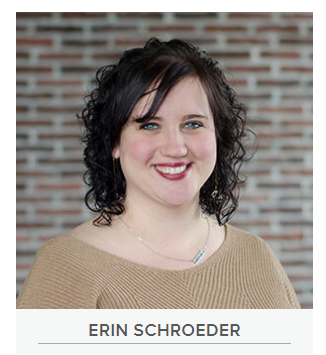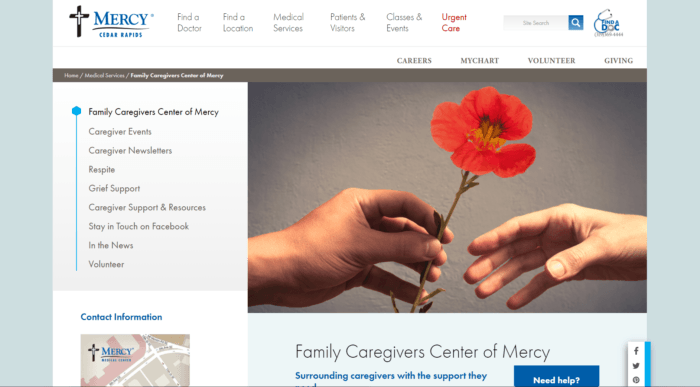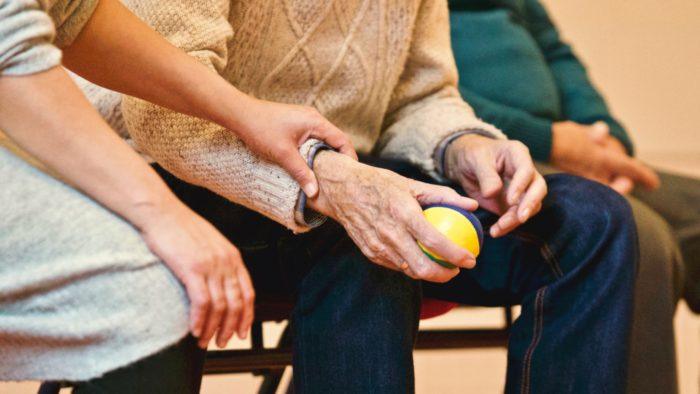
By Erin Schroeder -
Caregivers play an important role in the patient journey. Engage them with meaningful content that helps them make decisions.
My mom was one of the millions of Americans who are caregivers. Her role as a caregiver ended on March 20, 2018 when my grandmother passed away. And through her experience, I realized how much healthcare content could have helped her along the way.
Over 10,000 people turn 65 each day. This trend is expected to continue until 2029, when the youngest baby boomers turn 65 years old. Aging baby boomers, along with the high cost of senior care living, is creating millions of caregivers.
While the numbers vary widely – from 34.2 million up to 65 million – the fact is there is a huge population of siblings, children, and loved ones who are reported to provide care for a chronically ill, disabled, or an aged family member or friend.
This is a growing and important audience to remember in your healthcare marketing, as they are making care decisions every day for their loved ones.
I’ve seen caregiving first-hand because my mom has always been a caregiver, whether paid or unpaid.
She raised my brother and me as a stay-at-home mom until age 39 when she went back to school to become a registered nurse. After graduation, she worked primarily in senior living and geriatric care. In 2014, she retired.
But at that time my grandma, Eleanor, was nearly 90 years old. She was strong and mentally sharp, but she lived alone, did not drive, and had a few health problems heading her way. Grandma’s healthcare became my mom’s post-retirement job.
When I’d call my mom to chat, I’d ask how she was doing.
“Tired,” she’d say. “I’ve been up since 7 o’clock this morning. I had to drive Grandma to her doctor, and the podiatrist, and change her wound dressing. I still have to get her groceries and do both of our laundries at home. I just don’t have the energy.”
I can’t count how many times I heard that. I wanted to push my current city of residence and my hometown together so I could be there to help her.
Grandma passed away in March 2018. I miss her every day, and so does my mother. But as we said goodbye, and I watched my mom find life after being a caregiver, I wondered what could’ve helped my mom feel less alone, less stressed, and more in control of her life and the new expectations placed on her.
It’s easy to throw caregivers into one big group, highlighting their stress and fatigue. But while that’s true for many, how caregivers respond to stress and fatigue varies. What answers they need to cope with this tremendous responsibility varies, too.
A recent survey by Syneos Health Communications estimated there are 43.5 million people who provide unpaid care to adults. On average, caregivers devote around 41 hours a week to providing care to their loved ones.
That’s more than a full-time job.
In the survey, 1,380 caregiver participants said hospital brands don’t understand their journey as well as individual doctors and nurses. They describe their feelings as being “drained,” and “lost,” as well as “hopeless and lonely.” It’s a tough position to be in – and one that is often overlooked in healthcare marketing.
So what, as healthcare communicators, can we do with this information?
It feels uncomfortable to put “caregivers” and “marketing” in the same sentence. But caregivers use search engines to find answers and support. Wouldn’t it be great if caregivers could find articles and information that could help make their lives easier?
Creating blogs and content that help caregivers make decisions and find relief or support services to assist them is a huge benefit to offer. They’re as important to the patient journey as the patient, so don’t shy from creating content for them.
TV commercials, radio, billboards or magazine advertisements are also important. This audience is as likely to engage so long as the ad speaks to them and their experience.
Your organization could also take it a step further by offering caregiver support through events and special spaces at your hospital. Find a way to bring caregivers together to share experiences and build relationships.
Mercy Cedar Rapids actually built family caregiving services into their medical service line. A webpage for the center features services available to caregivers and families, including counseling, support groups, art therapy, and more. They also feature a tour of their comfortable, inviting caregiver center, and encourage those inspired by caregiving to donate to the Mercy foundation.

According to the Syneos survey, caregivers view images with an emotional pull.
“Non-caregivers gave a superficial, very literal report of what they were seeing,” the survey states. “Caregivers, on the other hand, read more emotion into what they saw and projected their experience onto the imagery.”
Take a look at this image:

A non-caregiver might describe it as, “holding hands with senior.” But a caregiver might describe it as, “a young person nurturing an older person.” As Syneos pointed out, caregivers project their experiences onto content they read. Considering how they’ll interpret images is important as you choose them for the content you create.
Besides images in your content marketing, consider other graphic approaches to speaking to this audience. Cone Health, in Greensboro, NC, featured an article, “5 Stress Relief Tips for Caregivers,” with a cheerful, easy-to-read infographic to accompany their advice.
And by building caregivers into the target audience of their content marketing hub, Wellness Matters, they’re capturing opportunities to help this ever-important audience feel involved. Even an article about exercising with arthritis speaks to how caregivers can help.
Like patients, caregivers are looking for answers and options. Since this often starts online, don’t hide the next steps. Lead them to the call-to-action that will make their life easier.
The Syneos survey also states that caregivers are “micro-influencers” for patients. In fact, more than 75 percent will influence when and how their loved one sees a medical professional, and nearly 70 percent of them will seek second opinions.
This trend has only grown. In 2013, Pew Research Center found that nearly half of online health searches were performed on behalf of someone else.
Leading a patient to conversion is one thing, but with this growing audience of caregivers, it’s essential that every piece of your marketing – even your physician profiles – helps them make decisions for family members who need care, especially they are seeking that care from out-of-state.
As you develop content, make calls-to-action that are clear and speak to this audience. Whether they’re seeking the best medical supplies or finding a new doctor for a loved one, caregivers are part of the consumer funnel.
In retrospect, I wish I could turn back the clock and change two things: To inspire confidence in my Mom to help her find answers to questions about her own caregiver needs, and more importantly, that I could’ve been closer to home to help her find the resources to ease her stress.
Even if a caregiver isn’t the one sitting on the exam table, they play a major part in the healthcare outcomes for your patients. By including content that speaks to the caregiver experience and challenges, you’re doing more good than you realize.
And isn’t that why we’re here in the first place?
At Geonetric, we create compelling digital experiences on our VitalSite content management system, as well as Sitecore, Drupal and other platforms. As a digital experience agency with deep technica... Read more
Learn best practices and tips for getting the buy-in you need to redesign your hospital’s website.Let your vision for a new website flourish by using this clear, easy-to-follow ...read more
If accessibility isn’t one of your digital priorities, it should be. New requirements may have you rethinking your to-do list.Ensuring the best user experience possible on your ...read more
As smartphones and mobile devices continue to evolve, learn how healthcare marketers can ensure consumers are getting the best small-screen experience when it comes to navigation.Explore ...read more
Meet the needs of your community and support your clinicians by helping patients choose the type of care that’s right for them based on their symptoms and other factors.How can ...read more